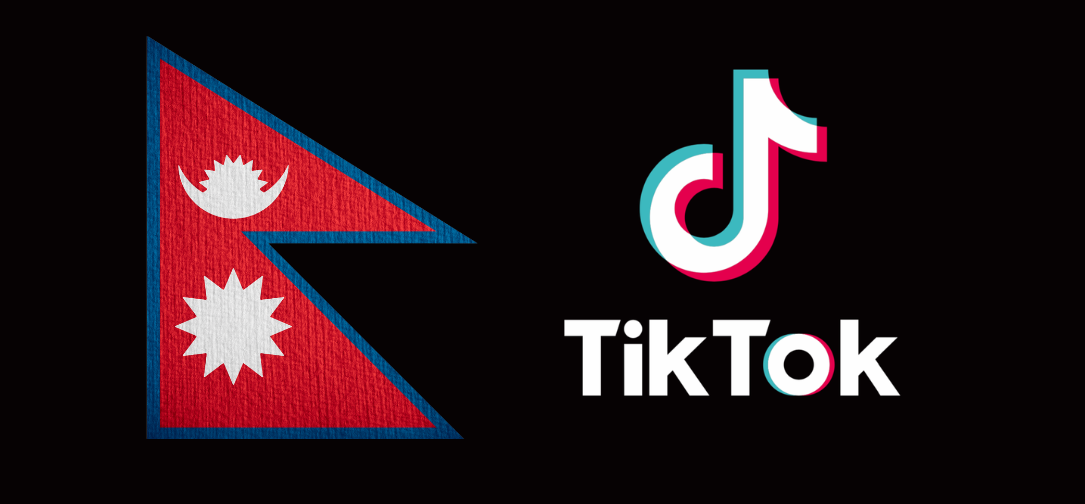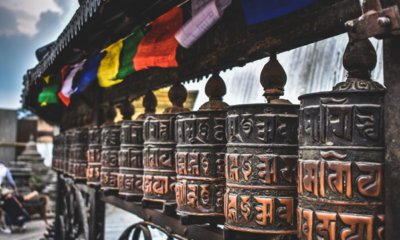Tech News
Nepal Lifts TikTok Ban: A Comprehensive Analysis of the Decision and Its Implications
Published
10 months agoon

This report provides a detailed and unbiased analysis of the events leading up to the ban, the conditions that TikTok has agreed to meet, the implications of the decision for Nepalese society, and the broader impact on the global digital landscape.
Background: The Rise of TikTok in Nepal
TikTok, a short-form video platform owned by Chinese company ByteDance, has become one of the most popular social media platforms globally since its launch in 2016. By 2020, TikTok had gained significant traction in Nepal, especially among younger demographics. The app allowed users to create and share 15- to 60-second videos, often set to music, and quickly became a platform for creative expression, entertainment, and social interaction.
However, the platform’s rapid growth in Nepal was not without controversy. Concerns began to emerge regarding the type of content being shared on TikTok. Critics argued that the platform was being used to spread misinformation, inappropriate content, and hate speech, which threatened to undermine social harmony in the country. These concerns were exacerbated by the platform’s algorithm, which some claimed amplified divisive content in a bid to increase user engagement.
The situation reached a tipping point in late 2023, when a series of viral videos sparked public outrage and led to protests. The Nepalese government, responding to these concerns and under pressure from various social and political groups, decided to impose a temporary ban on TikTok in November 2023.
The Ban: Reasons and Reactions
The government’s decision to ban TikTok was met with mixed reactions across Nepal. On one hand, supporters of the ban, including conservative groups and some segments of the political establishment, praised the move as necessary to protect the country’s social fabric. They argued that TikTok had become a breeding ground for content that was not only offensive but also harmful to the nation’s cultural and moral values.
1. Concerns About Social Harmony: The primary reason cited by the government for the ban was the platform’s perceived role in disrupting social harmony. Authorities pointed to the spread of videos that promoted hate speech, religious intolerance, and caste-based discrimination. Given Nepal’s diverse ethnic and religious composition, such content had the potential to ignite tensions and lead to real-world violence.
2. Spread of Misinformation: Another significant concern was the platform’s role in the spread of misinformation. During the COVID-19 pandemic, TikTok was criticized for allowing the dissemination of false information about the virus, vaccines, and government health measures. This misinformation was not only harmful to public health efforts but also undermined trust in government institutions.
3. Impact on Youth: The platform’s impact on the youth was another key issue. Critics argued that TikTok was contributing to the erosion of traditional values among young Nepalese, who were increasingly exposed to content that glorified risky behavior, violence, and hypersexuality. This, they argued, was leading to a moral decline among the younger generation.
4. Reactions from the Public and Media: The ban was met with a wave of criticism, particularly from younger users who had come to rely on TikTok as a primary form of entertainment and social connection. Social media was flooded with posts from users expressing their frustration and disappointment over the ban. The Nepalese media also covered the story extensively, with some outlets questioning the government’s motives and others supporting the decision as a necessary step to preserve societal values.
Internationally, the ban was seen as part of a broader trend of governments seeking to control digital content and curb the influence of foreign tech companies. Critics argued that the ban was an overreach of government power and a violation of free speech, while others saw it as a justified response to the challenges posed by unregulated digital platforms.
Negotiations and Conditions for Lifting the Ban
The nine-month ban on TikTok did not go uncontested. Throughout the ban, ByteDance engaged in negotiations with the Nepalese government to find a resolution. These negotiations were complex, involving discussions on content moderation, data privacy, and the role of social media platforms in society.
1. Content Moderation: One of the key conditions laid out by the Nepalese government was the implementation of stricter content moderation policies. The government demanded that TikTok take more proactive measures to monitor and remove content that violated Nepalese laws or threatened social harmony. This included setting up a dedicated team of moderators with knowledge of local languages and cultural sensitivities.
TikTok agreed to enhance its content moderation efforts, including the introduction of new algorithms designed to detect and remove harmful content more effectively. The company also committed to increasing transparency around its moderation practices, including regular reports to the Nepalese authorities on the actions taken to address problematic content.
2. Data Privacy and Localization: Another critical issue was data privacy. The Nepalese government, like many others around the world, was concerned about how TikTok handled user data, particularly the potential for data to be accessed by foreign entities. In response, TikTok agreed to several measures aimed at protecting the privacy of Nepalese users.
These measures included the localization of data storage, meaning that the data of Nepalese users would be stored on servers within the country or within a region agreed upon by both parties. This was intended to give the Nepalese government greater oversight of data practices and to reduce the risk of unauthorized access to sensitive information.
3. Compliance with Local Laws: The Nepalese government also required TikTok to comply with local laws and regulations, particularly those related to digital content and online behavior. This included adhering to laws on hate speech, religious sensitivity, and defamation. TikTok agreed to modify its community guidelines to align more closely with Nepalese legal standards and to implement a faster process for responding to government requests for content removal.
4. Education and Digital Literacy: In addition to these conditions, the Nepalese government emphasized the need for greater digital literacy among users. TikTok committed to launching educational campaigns aimed at promoting responsible use of the platform, particularly among young people. These campaigns were designed to help users understand the importance of verifying information, respecting cultural differences, and avoiding harmful content.
Lifting the Ban: Implications and Reactions
On August 2024, after months of negotiations and following TikTok’s agreement to the government’s conditions, Nepal officially lifted the ban on the platform. The decision was met with relief and optimism by many users, particularly younger Nepalese who had been eagerly awaiting the platform’s return. However, the lifting of the ban also raised important questions about the future of digital platforms in Nepal and the balance between regulation and freedom.
1. Impact on Social Harmony: The government’s primary concern—the impact of TikTok on social harmony—remains a critical issue. While TikTok’s enhanced content moderation efforts are a positive step, the effectiveness of these measures will need to be closely monitored. There is a risk that despite these efforts, some harmful content could slip through the cracks, potentially reigniting the issues that led to the ban in the first place.
The challenge for the Nepalese government will be to ensure that TikTok remains in compliance with the agreed-upon conditions while also allowing the platform to operate freely. This will likely require ongoing dialogue between the government and TikTok, as well as the involvement of civil society groups to monitor the platform’s impact on social harmony.
2. Freedom of Expression and Digital Rights: The lifting of the ban is a significant victory for advocates of free speech and digital rights. During the ban, there were widespread concerns that the government’s actions represented an overreach of power and an attempt to stifle dissent. The fact that the ban was lifted following negotiations rather than through unilateral government action is seen as a positive outcome for the protection of digital rights in Nepal.
However, the case also highlights the ongoing tension between freedom of expression and the need for regulation in the digital age. Governments around the world are grappling with how to balance these competing interests, and Nepal’s experience with TikTok may serve as a model—or a cautionary tale—for other countries facing similar challenges.
3. The Role of Global Tech Companies: The TikTok ban in Nepal also underscores the growing influence of global tech companies and the challenges they face in navigating different regulatory environments. ByteDance’s willingness to negotiate with the Nepalese government and agree to local conditions is indicative of a broader trend where tech companies are increasingly adapting their practices to comply with local laws and cultural norms.
This raises important questions about the responsibility of global tech companies in respecting local values while maintaining their commitment to free expression and user privacy. As digital platforms continue to expand their reach, these issues will only become more prominent, requiring tech companies to find a delicate balance between global standards and local regulations.
4. Broader Implications for the Digital Ecosystem in Nepal: The lifting of the TikTok ban has broader implications for the digital ecosystem in Nepal. The decision is likely to encourage other social media platforms and tech companies to review their policies and practices in the country to avoid similar conflicts with the government. It may also lead to increased scrutiny of other platforms that have not faced the same level of government attention as TikTok.
Moreover, the case could influence the development of new regulations governing digital content and online behavior in Nepal. The government’s experience with TikTok may prompt lawmakers to consider more comprehensive legislation aimed at regulating social media platforms while protecting free speech and digital rights.
Conclusion
The lifting of the TikTok ban in Nepal marks the end of a contentious chapter in the country’s relationship with one of the world’s most popular social media platforms. While the decision brings relief to millions of users and is a positive development for free speech advocates, it also highlights the complex challenges that governments and tech companies face in the digital age.
The conditions agreed upon by TikTok and the Nepalese government represent a compromise that seeks to balance the need for regulation with the protection of digital rights. However, the success of this compromise will depend on the effective implementation of the agreed-upon measures and the ongoing monitoring of the platform’s impact on social harmony.
For Nepal, the case of TikTok may serve as a precedent for how the country approaches the regulation of digital platforms in the future. It also underscores the importance of digital literacy and the need for users to engage with online content responsibly.
As global tech companies continue to expand their influence, the TikTok case in Nepal provides valuable lessons for both governments and platforms about the importance of dialogue, negotiation, and the need to adapt to local contexts in a rapidly changing digital landscape.

Crypto WINNAZ Launches First On-Chain Yield Engine for Meme Coins, Enabling 20x–300x Returns

What to Know Before Switching Cell Phone Network Services in 2025

Global Compound Feeds and Additives Industry Report: Market Expansion and Competitive Insights to 2035

Nura Labs Files Revolutionary Patent: AI-Powered Wallet Solves the $180 Billion Crypto Staking Complexity Crisis

In2space Launches Campaign to Make Space Travel Accessible for All

Inside Schedule F: Will Trump’s Federal Workforce Shake-Up Undermine Democracy?

US Stock Market Soars in May Amidst Tariff Tensions and Inflation Worries

S&P 500 Soars in Best May in Decades Amid Tariff Relief and Nvidia’s Surge

Trump’s Immigration Crackdown: Legal Battles and Policy Shifts

Trump’s Tariffs: A Global Economic Reckoning

Trump Administration’s Government Reshaping Efforts Face Criticism and Legal Battles

Attention Economy Arms Race: Reclaim Your Focus in a World Designed to Distract You

CV5 Capital Announces Standout Performance of Cryptanium Fund I SP, Beating Industry Benchmarks

Experts Warn of U.S. Slide Towards Authoritarianism Under Trump Administration

US Stocks Soar as Court Blocks Trump Tariffs and Nvidia Delivers Strong Earnings
Trending News
-

 Press Release5 days ago
Press Release5 days agoNura Labs Files Revolutionary Patent: AI-Powered Wallet Solves the $180 Billion Crypto Staking Complexity Crisis
-

 Press Release3 days ago
Press Release3 days agoGlobal Compound Feeds and Additives Industry Report: Market Expansion and Competitive Insights to 2035
-

 Press Release2 days ago
Press Release2 days agoCrypto WINNAZ Launches First On-Chain Yield Engine for Meme Coins, Enabling 20x–300x Returns
-

 Technology3 days ago
Technology3 days agoWhat to Know Before Switching Cell Phone Network Services in 2025





